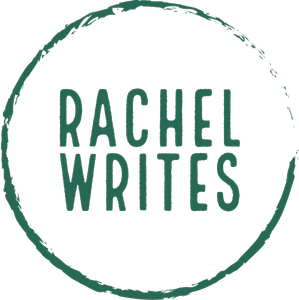So you’ve decided to run an event – but now you need to harness the power of words and pictures to get your potential audience engaged, through the door, and coming back for more.

Whether you are holding a one-off event or a series of events, you want to leverage this as much as possible and maximise your return on investment. The right content at the right time can not only promote your event and engage your target audience, it can help grant longevity for your key messages so they last in the minds of your potential customers.
Webpage
This will serve as a landing page on your website and link to all the associated content for your event so it’s incredibly important to get this right. The primary motive of this area will be to effectively convert web visitors from your target audience to event registrants so your copy should be relevant, action-oriented, and clear. Simplicity is key, so focus your page design and distill your content down to only highlight the most important items – a ‘punchy’ paragraph that resonates with your target audience, an image, and a short registration form are key. It is simple yet effective to construct your ‘punchy’ paragraph by presenting a problem that you know plagues your target audience, stressing the importance of solving that problem, then concluding with your solution (which will be expanded on at the event – don’t give too much away now!). From the moment your visitors load the page, it should be clear what they have to do (register to attend!) and how they will benefit from doing so – whether it be your expert advice, complimentary content asset, networking, or a prestigious guest speaker.
A couple of vital elements in your event webpage worth focusing on are the call to action button and of course the registration form itself. The buttons are integral in making your page as action-orientated as possible – use phrases such as “Click Here To Register Now” and make them stand out visually on the page to increase conversions. For your form, limit the number of questions you require an answer to and keep it concentrated on the bare essentials – the less work you ask of future attendees, the more likely they are to finish the form. You can always ask more questions via a feedback form at the event – but get them through the door first! Remember, the registration process should take less than three minutes.
Invite
Email is the main method of getting your invites (and subsequent reminder emails) out there and because of this, you need to make yours stand out. That should mean going with a bold subject line, perhaps getting a little something extra from the design team, or focusing on an exclusive giveaway or piece of content (see below). If your company already publishes a regular e-newsletter, in the preceding weeks to the event you might want to include a round-up of evergreen blog posts following the same themes alongside a powerful call-to-action to sign up. Keep the copy concise and make every word work hard to engage your invitees.
Blog (pre- and post- event)
You have outlined the key points of your event on your webpage and invite, but a blog, or series of blogs, could make for a great way to give out a little more information around the topics discussed, or the activities to take place at your event. These can be released both before and after the event, but the timing will dictate the motive of each.
Pre-event blogs will act as teasers, warming people up to attend by providing nuggets of information about what attendees can expect – remember that giving away the headlines is fine, but not the whole story! Maybe you want to focus on a high-profile guest speaker, some themes from a white paper you will release at the event, a sneak peek at a new product you will launch, etc. Always include a call to action to sign up for the event within the piece.
Post-event blogs will talk about the success of your event – build on the positive momentum gained with your attendees and hope to push this out to non-attendees as well. You might want to ask each presenter to expand upon their topic they discussed at the event, answer the questions asked by the audience at the Q&A section in more detail, or ask yourself “so what now?” so you can fill in the gaps not covered by your event.
Press release (pre- and post- event)
Like a blog, you can send out a press release both in the lead up to and following your event. Your aim is to get your release published by online and offline media so it can act as a (free!) third-party endorsement for your event and let your target audience know it is not to be missed/how successful it was and they should come along next time! However, saying that your event is happening, or happened, is not enough to get it picked up by the press – you need a strong news angle. Perhaps focus on a hard-hitting message that you will present on, a headline statistic in the report you are releasing, or promote the attendance of a prominent guest speaker – even the venue at which you are holding your event could pique interest if unique enough (and will provide a great accompanying photo!). The day on which you hold your event can help place it in the headlines – if it fits, tie it in with a national celebration day, anniversary, or wider news story to help journalists write about it. Remember to ensure that your press releases follow the industry-standard template before sending out (see some guidelines in my blog here).
Video
Filming your event means that you can take advantage of a growing medium – in January 2020, YouTube was the second most used social media platform in the world (Smart Insights), just behind Facebook, so adding video to your suite of event content is a smart move. It will be an engaging addition to your website and be easily sharable on other social media platforms so you can leverage its success and showcase the event to engage future attendees.
Social media
Be sure to push out a mixture of scheduled posts and live updates. You can pre-prepare scheduled tweets in the lead up to the event using a combination of associated imagery and agreed promo wording to create a buzz – also link to the content posted on your website such as a blog. Be sure to also post in real-time with photos and key takeaways as you watch the presentations – if there’s a panel get them together for a quick pic and tag everybody who’s involved with a pertinent quote from the event.
Complimentary content asset
Sending “thank you for attending” emails is not only polite, but keeps the conversation with your attendees going and can be the prompt that is needed to convert them to a customer. Within that email be sure to include the contact details of those they should get in touch with when looking to make a purchase/book a meeting, as well as other ‘added value’ complimentary content assets which will help strengthen the relationship. An example could be:
- The presentation slide deck.
- An infographic summarising the key messages and top stats from the event.
- A one pager summarising the event highlights and learning points.
- A copy of your own report which you compiled and presented on at the event.
- A corporate brochure highlighting your company’s mission, vision and culture as well as the products/services you offer.
You should also send “sorry you couldn’t make it” emails to those who signed up but didn’t attend. Mirror the main content used in the emails you sent to attendees – although they didn’t show, they are still warm leads who are worth getting to know better.
If you are in need of some content to maximise the success of your event please do get in touch to see where I can help.

